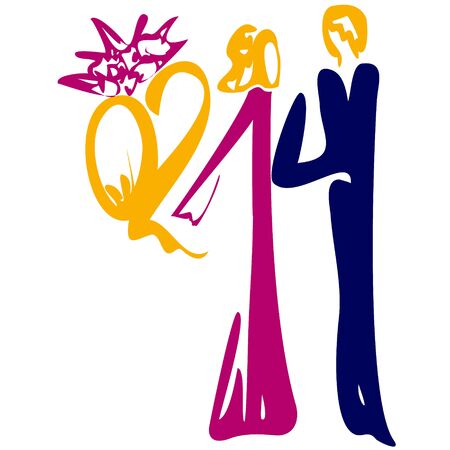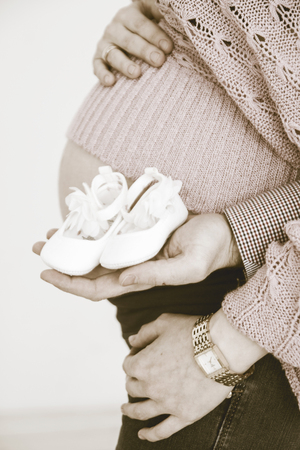Historical Roots
When delving into the tapestry of British folklore, it’s impossible to ignore the distinctly regional flavour that threads through its stories—none more so than the archetypes of the Northern wise women and the Southern cunning men. These figures are not simply products of myth but are deeply rooted in the historical and cultural soil of their respective regions. In the North, where landscapes are rugged and communities traditionally close-knit, wise women emerged as local healers, midwives, and holders of age-old knowledge passed down through generations. Their wisdom was shaped by a reliance on herbal remedies and communal trust, often filling gaps left by distant or inaccessible official medicine.
Meanwhile, in the South, cunning men occupied a somewhat different niche. Southern England’s villages and market towns fostered a tradition of shrewd, often literate men who blended folk practices with book learning—sometimes even dabbling in astrology or early forms of psychology. The socio-cultural factors at play here included greater access to education and trade routes, which allowed southern cunning folk to incorporate new ideas and tools into their repertoire. Thus, while both wise women and cunning men served as intermediaries between the ordinary and supernatural worlds, their roles were distinctly shaped by the environments, economies, and social networks unique to North and South Britain.
2. Roles and Reputations
Throughout the tapestry of English folklore, the regional divide between the northern wise women and southern cunning men has been more than just a matter of geography—it is a reflection of contrasting social roles, skillsets, and public perceptions rooted in local tradition. To better understand these distinctions and overlaps, it is helpful to explore the characteristics that shaped their unique positions within their communities.
Comparative Overview of Social Roles
| Northern Wise Women | Southern Cunning Men | |
|---|---|---|
| Community Role | Matrons of folk knowledge, often seen as healers, midwives, or protectors of village lore. | Pragmatic fixers, called upon for practical magic, fortune-telling, and resolving disputes. |
| Skills & Practices | Herbal medicine, charms for wellbeing, spiritual guidance steeped in local superstition. | Counters to witchcraft, legalistic magic (curse lifting), and advice on everyday matters. |
| Gender Expectations | Usually older women; wisdom associated with age and maternal authority. | Predominantly men; perceived as shrewd negotiators or interpreters of fate. |
| Public Perception | Respected yet sometimes feared—seen as both a blessing and potential threat. | Valued for results but occasionally mistrusted for alleged trickery or manipulation. |
| Cultural Symbolism | Mystical matriarchs embodying the ‘old ways’ of the North. | Adept survivors in a changing South—symbols of wit over tradition. |
Divergence and Convergence in Reputation
While both figures served vital community functions, their reputations diverged along lines shaped by gender norms and local expectations. Wise women were often cast as custodians of ancient wisdom—sometimes revered for their nurturing qualities, other times suspected of meddling with forces beyond comprehension. In contrast, cunning men gained notoriety for their practical solutions to everyday woes; they navigated the blurred boundaries between legitimate assistance and cunning sleight-of-hand. Yet, despite these differences, both shared an ambiguous status: straddling the boundary between trusted adviser and potential outsider—a testament to England’s ongoing negotiation with the magical in everyday life.

3. Influence of Landscape and Local Culture
One cannot fully understand the enduring presence and variation of folk healers in Britain without examining how landscape, local industries, and community values shaped their roles. In the rugged north, the Wise Women often emerged from isolated villages nestled among hills and moors. The remoteness fostered a sense of self-reliance; communities depended on local knowledge to combat illness and misfortune when formal medical help was days away. The very terrain—wild, untamed, and mystical—fed into beliefs that northern wise women were in tune with nature’s secrets, guardians of ancient remedies passed down through generations.
Conversely, the southern regions, with their more arable land and proximity to burgeoning towns, cultivated a different kind of folk healer: the Cunning Men. Southern England’s history as a patchwork of market towns and prosperous farming villages meant communities were more interconnected but still retained distinct local identities. Here, cunning men were often seen as practical problem-solvers who blended herbal knowledge with charms, astrology, or even legal expertise. Their authority derived not only from tradition but also from their ability to adapt folk wisdom to a changing society shaped by commerce and innovation.
The influence of local industry cannot be understated. In mining areas of the North East, for example, Wise Women developed reputations for treating injuries unique to colliers and ironworkers—earning trust through pragmatic skill as much as mystical reputation. Meanwhile, southern cunning folk might have focused on agricultural ailments or disputes over land boundaries, reflecting the priorities of their neighbours. These differences underscore how folk healing was not a monolith but a flexible response to the needs dictated by geography and economy.
Underlying it all were community values—northern societies prized resilience and communal memory; thus, wise women became custodians of both healing practices and social lore. In contrast, southern communities often valued negotiation and wit, traits mirrored in the cunning men’s methods of mediating quarrels or navigating local bureaucracy. Ultimately, landscape and culture acted as both stage and script for these regional traditions, shaping not just what folk healers did but how they were perceived: revered matriarchs in the North, canny intermediaries in the South.
4. Practices and Beliefs
When considering the Northern wise women and Southern cunning men, their practices and beliefs are as distinctive as the landscapes they inhabit. These traditions are not merely relics of folklore but active reflections of the regional identities that have shaped England across centuries.
Rituals and Remedies: A Comparative Glance
| Wise Women of the North | Cunning Men of the South | |
|---|---|---|
| Typical Rituals | Spinning charms for protection, herbal gatherings at dawn, moonlit divination circles, blessing wells | Written spells, ritual burning of herbs, drawing protective marks on doorsteps, “laying” curses or cures with rhyme |
| Remedies | Infusions using local moorland plants (e.g., heather, bilberry), poultices for wounds, bone-setting, midwifery skills passed through generations | Tinctures from hedgerow botanicals (hawthorn, nettle), concoctions for warding off ill luck, ointments for livestock ailments, love potions |
| Core Beliefs | Emphasis on ancestral wisdom and kinship with the land; belief in spirits of place; respect for cyclical time (solstices and equinoxes) | A practical blend of Christianity and folk belief; faith in spoken word’s power; focus on personal fortune and community harmony |
How Practices Reflect Regional Identities
The North’s wise women often embody resilience—perhaps a reflection of harsher climates and close-knit communities shaped by rugged hills. Their rituals prioritise endurance and collective well-being, echoing traditions rooted in long winters and agricultural cycles. Meanwhile, Southern cunning men showcase adaptability, blending old superstitions with newer beliefs as befits a region historically more open to commerce and outside influence.
Regional Worldviews Encoded in Everyday Life
For many Northerners, consulting a wise woman is an act steeped in trust—a tacit acknowledgment that local knowledge trumps distant authority. In contrast, Southern villages might seek a cunning man’s help when facing social or economic misfortune, reflecting an enduring pragmatism. Each group’s remedies—be it the Northern use of wild moorland herbs or the Southern reliance on hedgerow finds—mirror their landscapes’ resources and their people’s outlooks.
The Enduring Relevance Today
Despite modern scepticism, these regional practices endure in subtle ways: folk remedies remain popular in rural markets; seasonal festivals still nod to ancient rites. Ultimately, the Northern wise women and Southern cunning men represent not only England’s mystical past but also its rich tapestry of local identity—woven together by shared belief in the unseen powers that shape everyday life.
5. Legacy and Modern Perceptions
The echoes of the northern wise women and southern cunning men resonate far beyond their own eras, finding new life in modern British culture. While once shrouded in secrecy or suspicion, these regional traditions are now subject to both scholarly revival and popular reinterpretation. In the North, communities often celebrate their wise women as local icons—embodying resilience, herbal knowledge, and community spirit. Folk festivals and storytelling nights across Yorkshire and Cumbria frequently include tales of these figures, reinforcing a sense of place and heritage. Meanwhile, the legacy of southern cunning men is evident in the South’s enduring fascination with folk remedies and magical folklore. Contemporary practitioners of alternative medicine sometimes trace their roots—rightly or wrongly—to these historical predecessors, blending old customs with new-age wellness trends.
Media and Popular Culture
Television dramas, literature, and even podcasts increasingly explore the archetypes of wise women and cunning men, casting them as complex characters rather than mere curiosities of history. Shows set in rural England often feature a village healer or “cunning” character, reflecting not only nostalgia but also a subtle critique of modernity’s loss of local wisdom. The popularity of such representations indicates a collective yearning for connection to the land—and to regional identities that resist homogenisation.
Academic Reappraisal
In academic circles, folklorists and historians have begun to reassess these traditions through a more nuanced lens. Rather than dismissing wise women as superstitious or cunning men as charlatans, recent research highlights their roles as vital community members—mediators between tradition and change. University courses on British folklore now include dedicated modules exploring these figures’ contributions to social cohesion, gender dynamics, and rural resilience.
Contemporary Relevance
Today’s Britain is marked by a renewed interest in regional distinctiveness—whether through food, dialects, or folk customs. The stories of wise women and cunning men serve as reminders that cultural identity is deeply rooted in local experience. Workshops on herbalism or folk magic attract participants keen to reclaim lost knowledge or simply reconnect with their heritage. Ultimately, the legacy of these regional traditions lies not just in their preservation but in their ongoing ability to inspire curiosity, creativity, and pride throughout contemporary British society.


